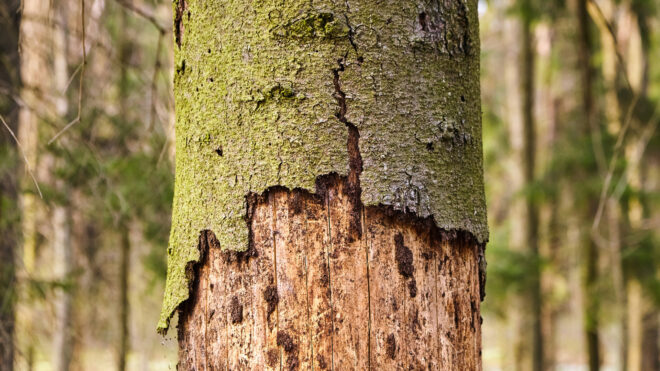Each year falling trees cause $ 1 billion in property damage. Although homeowners insurance will usually cover the damage caused by falling trees, there is still a big risk associated with having dead trees on your property.
Continue reading below to learn more about the five dangers of dead trees and how to deal with them.
1. Property Damage
The most obvious danger of dead trees is property damage. Even just a fallen limb can potentially break windows or break your roof or gutters. It’s not unheard of for an entire tree to fall, especially during a storm.
If the whole dead tree falls on your home, it could make your home unlivable. If a dead tree from your property falls on your neighbor’s house or car, you could be held responsible.
2. Injury
When a tree dies it becomes brittle and fragile. A dead tree can drop limbs or fall at any time, even if it’s not stormy. If this happens, anyone below the tree or passing by could be injured.
3. Powerline Damage
A limb or the dead tree itself could fall onto surrounding powerlines. This might result in an outage for you or your neighborhood. Depending on the time of year, a power outage could leave you or your neighbors without heat or air conditioning.
4. Home for Pests
Dead trees make the perfect homes for various insects or rodents. Ants, termites, and beetles thrive off rotting wood. Bees and wasps will often take up residence in dead trees. The presence of these insects could attract bats or rodents.
5. Infection
Tree death is often caused by infection. Some infections or deadly fungi can spread from tree to tree or to other plants in your yard. Removing the tree as soon as possible is the best way to prevent spread.
How to Tell if a Tree is Dead
It can sometimes be difficult to tell if a tree is dying or already dead. If a tree begins dying in the fall, you might assume it’s a natural changing of seasons.
It’s important to check your trees if you suspect anything. The sooner you can identify a dead tree and have it removed, the better.
Start by peeling open a twig, if it’s green inside the tree is healthy. Next, check the trunk for splits, cracks, or peeling bark. Lastly, look for missing branches or leaves in the canopy.
If the tree in question exhibits brown or dry twigs, trunk splits, or missing branches, it might be dying.
Removing a Dead Tree
You might be tempted to take matters into your own hands and remove a dead tree yourself. Attempting a removal risks, at best a minor fall from a ladder and at worst, sending the tree crashing down in the wrong place.
If property damage occurs this way, homeowners insurance will not cover the costs of repair.
Only experienced professionals with the proper tools and training should remove dead trees. Save yourself the hassle and contact us at P’n’D Logging and Tree Services today.

